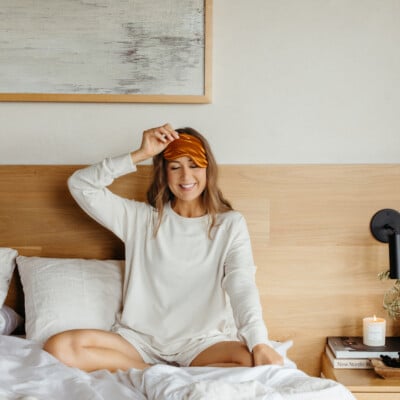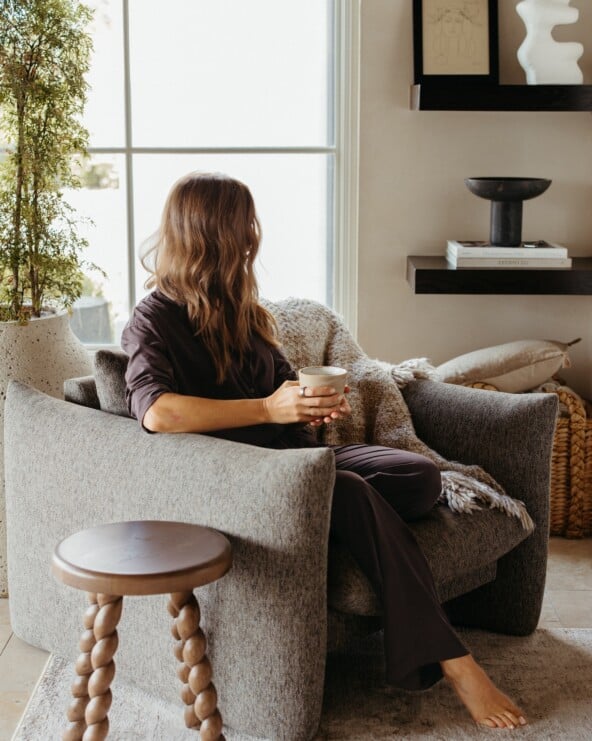Editor’s Note: I’m delighted to end the year telling the story of a personal friend, inspiring athlete and all-around badass woman, Caroline Gaynor. We met over the summer and I was absolutely awestruck by her kindness, selfless heart and background of guiding visually impaired athletes. Around this time of year, I like to reflect on the year as a whole — thinking about the experiences that have provided a lot of growth, learning and laughter, as well as the great people I’ve met, and friends I’ve made. Caroline Gaynor is one of those people.
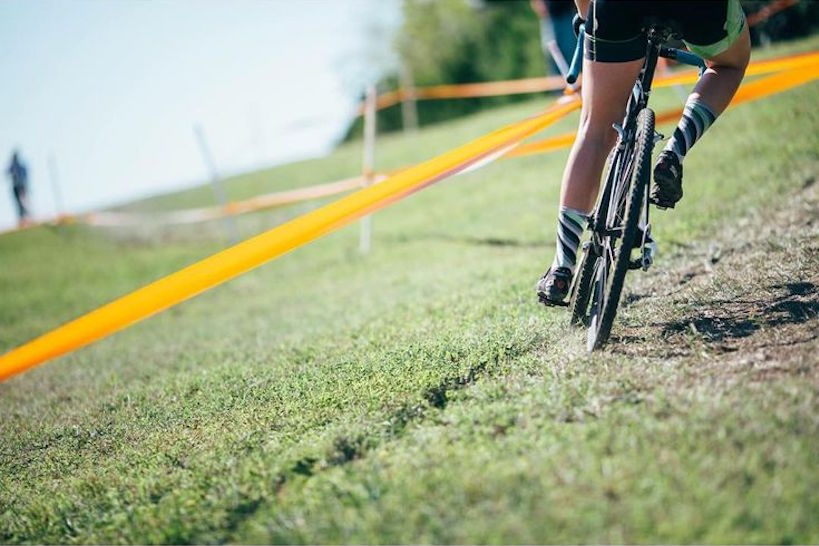
It was late July. A hot and balmy Saturday morning to be exact. As I rode my bike down to Juan Pelota, a favorite coffee shop amongst cyclists, I started getting nervous. I was meeting with the highly lauded Caroline Gaynor for the first time. We were only recent friends via social media, though everyone in Austin and as far as New York City sang her praises.
“You haven’t met Caroline Gaynor yet?” — they’d ask — with a dramatic head tilt to the left and a confused facial expression. From what I gathered, she was an accomplished and strong athlete who raced bikes and completed several Ironman triathlons. I was impressed before I met her, but I was about to learn so much more.
We set out for a 30-mile ride, giving us plenty of time to talk and get to know one another. Before we took off, I was still nervous. Knowing she could win an entire race before I could make it to the top of a hill, I worried I might be too slow for her. Out of the gate, she said “You pick the pace you’re comfortable with and I’ll follow. Let’s make this fun.” A true pro — having nothing to prove.
Within the first mile we were already laughing, and by mile 5 I knew I made a lifelong friend. I expected to mostly hear about her greatest achievements, time spent on the podium and numerous accolades. Instead, we talked about life — sharing our struggles, goals, dating stories and probably our favorite donut spots. She cared more about getting to know me than listing her accomplishments.
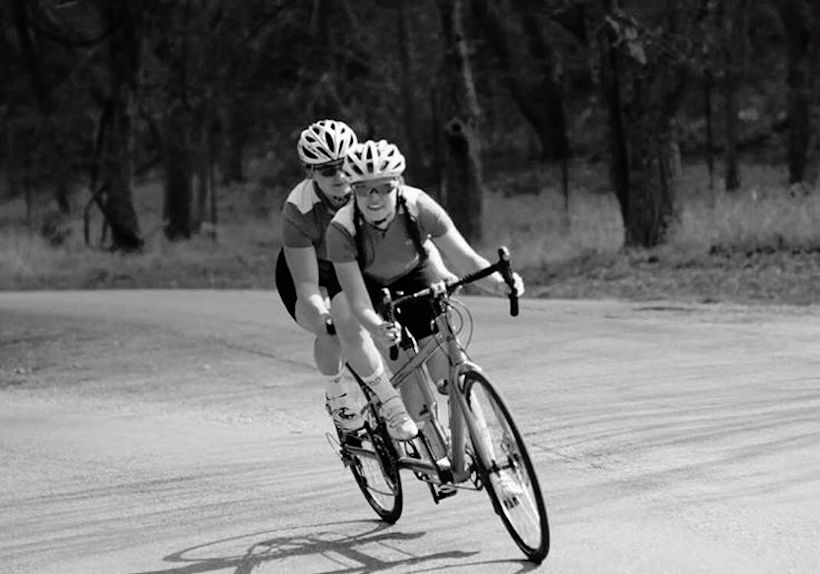
Halfway into our ride, I got a flat. After several unsuccessful and hilarious attempts to repair, we kicked up our feet in someone’s lawn and waited an hour for a ride to pick us up. It was during this time, I finally got to learn more about the badass Caroline Gaynor, and admired her even more. For the past 7 years, since the summer of 2008, Caroline has been guiding visually impaired athletes, and has helped blind triathletes reach the finish line in 6 Ironmans and 30+ triathlons. Modest, yet beaming with pride, she talked about a few of her athletes that she’s been racing with, as their guide. She told me about their accomplishments and that she was stoked to not only guide them, but be a part of their journey.
Admittedly, I was unfamiliar with the process of guiding, but Caroline explained it as such: During the swim, she is connected to her athlete at the hip by a tether. During the cycling leg of the race, she and her athlete ride in tandem and during the run — similar to the swim — they’re connected by a band they hold. Not only does it require optimal endurance and physical strength to race up to 140.6 miles by yourself, imagine racing alongside someone else, that you’re guiding for up to 15 hours. Strong communication, patience and a great attitude are paramount. It was in this moment, I truly knew I was in the company of an exceptional and selfless person and can understand why everyone speaks so highly. And moreover, why Gaynor is always smiling and happy — she’s helping others achieve their goals.
Over the summer, Gu Energy made a short 3-minute video about Caroline called “Attached at the Hip” that not only illustrates what guiding looks like, but showcases what a talented, kind and generous woman she is. In Caroline’s own words in this video: “It’s my responsibility to make sure they enjoy the experience and have a good race. I don’t come into it thinking I am coaching this person. But if I feel like I can say something that might be helpful, I will. But that’s an understanding you have with the athlete. It’s not my race. It’s my athlete’s race. It has nothing to do with me.”
At the end of our short Saturday ride on that hot day in July, Caroline said, “Let me ride your first 100-mile century ride with you. Wait for me and I’ll do it.” She knew it was a goal of mine to finish a century ride before the end of 2015, so of course I held her to it. Between our busy travel schedules and her numerous races, I was prepared to push this to a 2016 goal. But, in early October I received a text from Caroline saying, “Ironman Maryland is postponed to weather… century ride this weekend?” When Caroline Gaynor asks you to go on a bike ride, you do it. And I’m so thankful I did.
That day ended up being a Top 10 moment in life. She made sure our route was doable and invited along some of the best and most positive company I could’ve asked for. Much like she approaches guiding, she checked in with me throughout the entire 100 miles, making sure I was hydrated, eating enough and of course, laughing. Caroline’s far too humble to say she’s the great one. Instead, she’ll focus on your achievements, lifting you up and making you believe you can do anything. May we all find that thing in life that allows us to help others reach their goals and experience something so wonderful. Read on to learn a little more about Caroline and her experience with guiding…
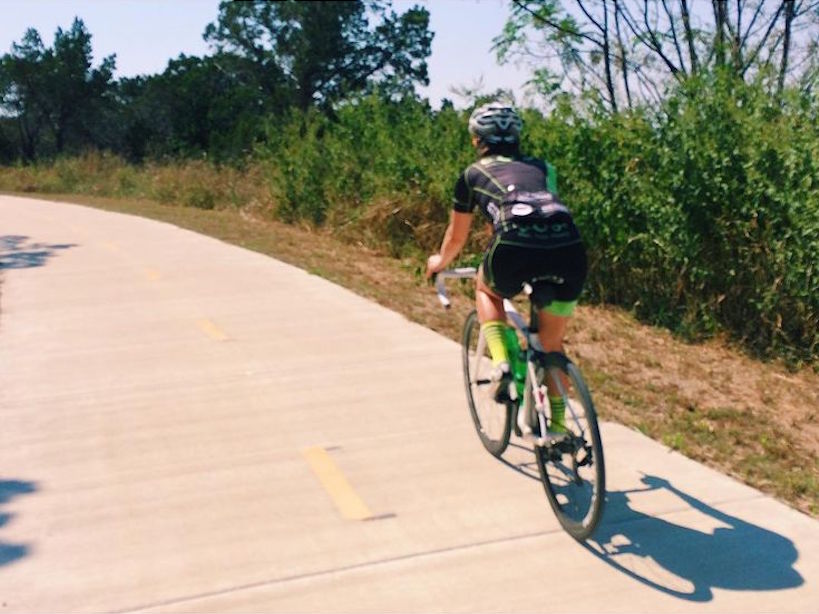
Kelly: How long have you been a cyclist?
Caroline: I have been a cyclist since junior year of college, when I began bike racing (badly). I did my first 5k when I was 12 years old. It was along the Schuylkill River in Philadelphia. I ran it with my Dad. It was about 90 degrees during the race and my Dad said that I sounded like I was dying.
K: How did you get involved with guiding?
C: I guided my first triathlon in 2008. I was signed up to race in the elite age group wave of the NYC Triathlon and was all set to compete on my own, when I received a phone call from Matt Miller (now the Head of BASE Nutrition) about a week before the event. At the time, Matt ran C Different, which was an organization that helped get blind athletes into the sport of triathlon. Matt had an athlete coming into Chicago to do the race and he hadn’t found a guide for her yet. Matt asked me if I knew anyone who could guide her and I volunteered to do it. Before 2008, I had gone on a couple of runs with athletes in Achilles International, but I had never considered guiding a triathlon, because I didn’t know any blind women who competed in triathlons.
K: How many races do you guide each year?
C: It really depends on the year. In 2015, I guided one Olympic, three sprints, two Half Ironman and two full Ironman triathlons.
K: What are the most rewarding and the hardest parts of what you do?
C: The most rewarding part would have to be the incredible friendships I’ve formed through guiding. Some of the athletes I’ve guided have become my closest friends. I am reluctant to say that there is a hardest part. I guess, if I had to pick something, I would say that the hardest part is knowing that if I have a bad day, I could disappoint someone other than myself.
K: What motivates you?
C: That’s a heavy question! I think that my greatest motivation in life is helping other people, in whatever way that I can. Maybe that sounds cheesy, but it’s true. There is nothing better than making sure that people feel valued and worthy of love. Through guiding, I am able to help people achieve athletic goals, but again, I am just grateful for the relationships I’ve formed through guiding.
K: What has been your biggest accomplishment while guiding?
C: Every race feels like a huge accomplishment, but if I had to pick one, I would say that it was finishing Ironman Lake Placid in 2010. Patricia Walsh wanted to become the first blind female athlete to complete an Ironman with a female guide. I stepped in 5 weeks before the event after her guide broke her wrist in a bike crash.
K: What do you do in your downtime?
C: I like to veg out when I’m not training or working. I should probably read a lot more than I do (I promise, I’m working on it), but I love watching movies and Netflix shows. Also, I’m happy doing any activity that involves food.
K: What have you learned from your athletes?
C: I learn so much from my athletes. That’s a really hard question to answer. I think the lesson we all learn through racing and training is how to persevere. These athletes are some of the toughest people around.
*If you would like to get involved with guiding athletes or are interested in learning more, visit Caroline’s website, which is full of resources on organizations, websites and Facebook groups that support guiding.



